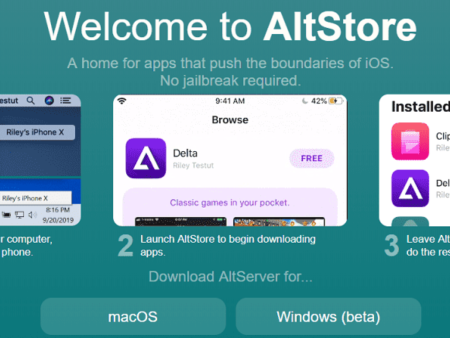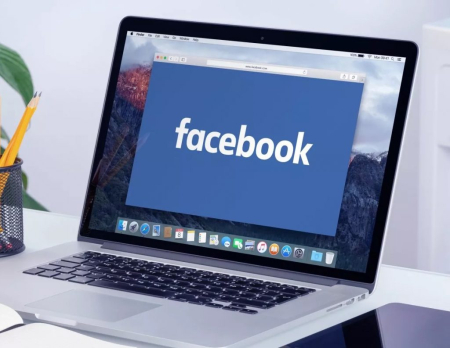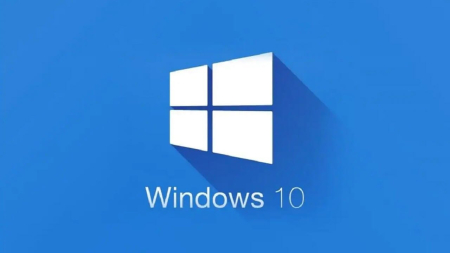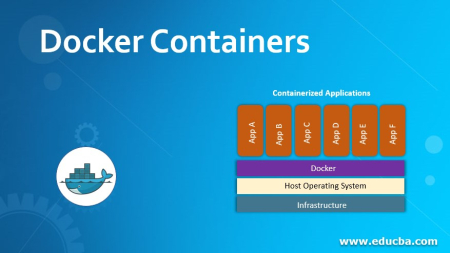The Future is Now: Exploring the Potential of the Internet of Things (IoT)
-
05/04/2023
-
910
-
0
The Internet of Things (IoT) has emerged as a game-changing technology that promises to revolutionize how we interact with the world, bringing new levels of connectivity, convenience, and efficiency to our daily lives.
Related posts
10 Essential Strategies for Mobile App Optimization
How to Optimize App Description on App Store and Google Play
1. Smart Homes and Cities of Internet of Things (IoT)
The Internet of Things (IoT) has made it possible for homes and cities to become more innovative and efficient. By connecting various devices and sensors to the internet; IoT has enabled a level of automation and control that was previously impossible. This article will explore ways IoT revolutionizes how we live and work in smart homes and cities.
Home Automation: With IoT-enabled devices, homeowners can automate tasks such as turning off lights, adjusting thermostats, and even starting the coffee machine. This saves time and effort, improves energy efficiency, and reduces utility bills.
Energy Efficiency: Smart grids and IoT sensors can optimize energy consumption in buildings and reduce carbon footprints. By monitoring energy usage and adjusting it in real time, IoT can help reduce energy waste and cut costs.
Urban Planning: Cities can leverage IoT technology to improve traffic, emergency response times, and waste management. IoT sensors can monitor traffic flow and optimize traffic signals to reduce congestion while providing real-time data to emergency services. Waste management can be improved by using IoT to monitor garbage levels and schedule pickups more efficiently.
These are just a few examples of IoT transforming intelligent homes and cities. As IoT technology advances, we expect to see even more innovative applications that improve our lives and the world. You can buy app ratings for your app from real users to improve your app ranking
2. Healthcare and Wearables
The healthcare industry has long been a target for technological disruption; and IoT plays a significant role in transforming how we approach healthcare delivery. By leveraging wearable devices and IoT sensors; healthcare providers can monitor patient health in real-time, improve diagnosis and treatment; and reduce costs. This article will explore how IoT transforms the healthcare industry through wearables and other IoT devices.
Remote Monitoring: IoT wearables can continuously monitor vital signs and provide real-time health updates to doctors and caregivers. This is especially valuable for patients with chronic conditions who need ongoing monitoring and care. Wearables can also track medication adherence, physical activity, and sleep patterns, providing valuable insights for healthcare providers.

Internet of Things (IoT), Source: Asoservice.com
Improved Patient Outcomes: IoT-powered devices can aid in diagnosing and treating chronic diseases, improving patient outcomes. Wearables can monitor symptoms, track disease progression, and provide personalized treatment plans. Additionally, IoT devices can collect and analyze data from multiple patients, helping to identify trends and improve treatment protocols.
Predictive Maintenance: Hospitals and clinics can use IoT sensors to monitor medical equipment and predict maintenance issues before they occur. This helps reduce downtime and ensure that equipment is always available when needed.
These are just a few examples of IoT transforming healthcare through wearables and other devices. As IoT technology advances, we expect to see even more innovative applications that improve patient outcomes, reduce costs, and increase efficiency.
3. Industrial of Internet of Things (IoT)
The Internet of Things (IoT) revolutionizes the industrial sector by enabling connected machines and sensors to communicate and exchange data. This connectivity has the potential to transform manufacturing; logistics, and other industrial processes, leading to increased efficiency, reduced costs; and improved safety. In this article, we'll explore some of the ways that IoT is transforming the industrial sector.
Predictive Maintenance: IoT sensors can monitor industrial equipment, predict maintenance needs, and prevent costly breakdowns. By analyzing sensor data, IoT systems can detect signs of wear and tear and schedule maintenance proactively, minimizing downtime and reducing repair costs.
Supply Chain Optimization: IoT can help streamline supply chain processes by tracking inventory, optimize ASO routes, and reducing waste. By monitoring inventory levels in real-time, IoT systems can automatically reorder supplies when stock levels are low, reducing stockouts and improving overall efficiency.
Safety and Security: IoT devices can monitor industrial environments for potential hazards and alert workers in real time. For example, sensors can detect gas leaks, fire hazards, or other dangerous situations and trigger alarms to notify workers to take appropriate action. Additionally, IoT can improve security by monitoring access to facilities and equipment, reducing the risk of theft or unauthorized access.
These are just a few examples of IoT transforming the industrial sector. As IoT technology advances, we expect to see even more innovative applications that increase efficiency, reduce costs, and improve safety.
4. Agriculture and Farming of IoT
The agricultural industry is one of the global economy's oldest and most crucial sectors. The industry is undergoing a technological revolution driven by the Internet of Things (IoT). By leveraging IoT sensors and data analytics, farmers can monitor soil conditions; track livestock, and optimize irrigation and fertilizer application. In this article, we'll explore some of the ways that IoT is transforming agriculture and farming.
Precision Agriculture: IoT sensors can provide farmers real-time data on soil moisture, nutrient levels, and crop health. This allows farmers to optimize irrigation and fertilizer application, resulting in higher yields and reduced waste.
Livestock Monitoring: IoT devices can track animal health and location, providing farmers valuable insights into their livestock's behavior and health. For example, sensors can detect when cows are in heat or sick, allowing farmers to take prompt action.
Smart Irrigation: IoT systems can optimize irrigation schedules based on weather patterns and soil conditions, reducing water usage and increasing crop yields. This saves water and reduces energy costs associated with pumping and distributing water.
These are just a few examples of IoT transforming agriculture and farming. As IoT technology advances, we can expect to see even more innovative applications that increase efficiency, reduce costs, and improve sustainability in the agricultural industry.
Precision Agriculture: IoT sensors can provide farmers real-time data on soil moisture, nutrient levels, and crop health. This allows farmers to optimize irrigation and fertilizer application, resulting in higher yields and reduced waste.
Livestock Monitoring: IoT devices can track animal health and location, providing farmers valuable insights into their livestock's behavior and health. For example, sensors can detect when cows are in heat or sick, allowing farmers to take prompt action.
Smart Irrigation: IoT systems can optimize irrigation schedules based on weather patterns and soil conditions, reducing water usage and increasing crop yields. This saves water and reduces energy costs associated with pumping and distributing water.
These are just a few examples of IoT transforming agriculture and farming. As IoT technology advances, we can expect to see even more innovative applications that increase efficiency, reduce costs, and improve sustainability in the agricultural industry.
5. Retail and Customer Experience
The retail industry is constantly evolving, and the Internet of Things (IoT) plays an increasingly important role in transforming how retailers interact with customers. By leveraging IoT sensors and data analytics, retailers can gain valuable insights into customer behavior, optimize store layouts, and improve inventory management. In this article, we'll explore ways IoT is transforming retail and customer experience.
Smart Inventory Management: IoT sensors can track inventory levels in real-time, alerting retailers when stock levels are low or items are out of stock. This helps retailers optimize their inventory management processes, reduce waste, and ensure that popular items are always available.
Personalized Shopping Experience: IoT can help retailers provide a more personalized shopping experience by tracking customer behavior and preferences. By analyzing data from sensors and customer profiles, retailers can recommend products that are more likely to be of interest to individual customers, leading to higher sales and improved customer loyalty.
Smart Store Layout: IoT sensors can track customer movement within stores, providing retailers valuable insights into how customers navigate and interact with their products. This data can be used to optimize store layouts, improve product placement, and increase overall store efficiency. You can buy iOS keyword app downloads for more details.
These are just a few examples of IoT transforming retail and customer experience. As IoT technology advances, we expect to see even more innovative applications that improve the customer experience, increase sales, and drive retail success.
6. Transportation and Logistics of Internet of Things (IoT)
The transportation and logistics industry is a critical part of the global economy, responsible for moving goods and people worldwide. Today, this industry is being transformed by the Internet of Things (IoT). By leveraging IoT sensors and data analytics, transportation companies can optimize routes, reduce fuel consumption, and improve safety. In this article, we'll explore some of the ways that IoT is transforming transportation and logistics.
Smart Fleet Management: IoT sensors can provide real-time data on vehicle location, speed, and fuel consumption. This allows transportation companies to optimize routes and reduce fuel consumption, leading to lower costs and a more sustainable supply chain.
Cargo Monitoring: IoT sensors can monitor cargo conditions during transport, alerting logistics companies when cargo is damaged, or temperatures deviate from safe ranges. This helps ensure that cargo arrives at its destination in good condition, reducing waste and improving customer satisfaction.
Predictive Maintenance: IoT sensors can detect signs of wear and tear in vehicles and machinery, predicting maintenance needs and reducing the risk of unexpected breakdowns. This can help transportation companies reduce downtime, increase efficiency, and improve safety.
These are just a few examples of IoT transforming transportation and logistics. As IoT technology advances, we can expect to see even more innovative applications that improve efficiency, reduce costs, and improve sustainability in the transportation industry.
Conclusion
In conclusion, the Internet of Things (IoT) is transforming various industries and revolutionizing how we live, work, and interact with the world around us. With the potential to optimize processes, reduce costs, and increase sustainability; IoT is set to play an increasingly important role in shaping the future of our society. The possibilities are endless, and it's an exciting time to participate in this technological revolution.
Related posts
How to increase app reviews and app ratings for Android or iOS apps free
How to push Top app keyword ranking for Android & iOS apps and games
Thanks so much for reading this article.
Source: https://asoservice.com/




































Leave a Reply
Your e-mail address will not be published. Required fields are marked *